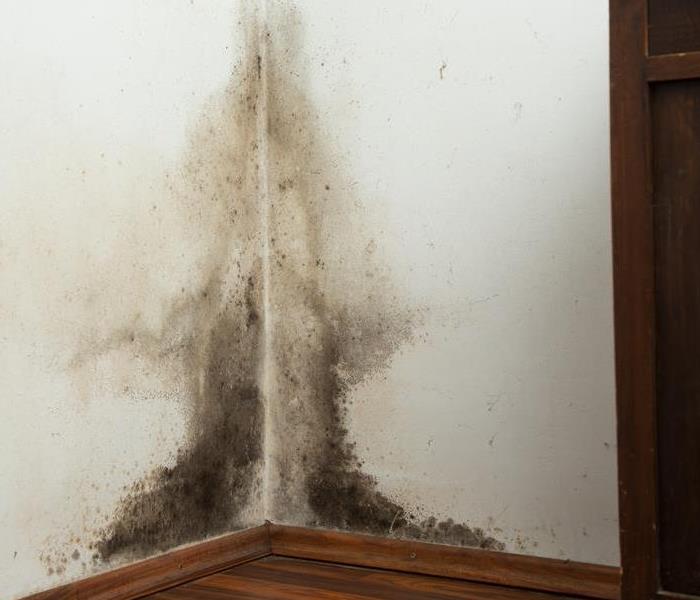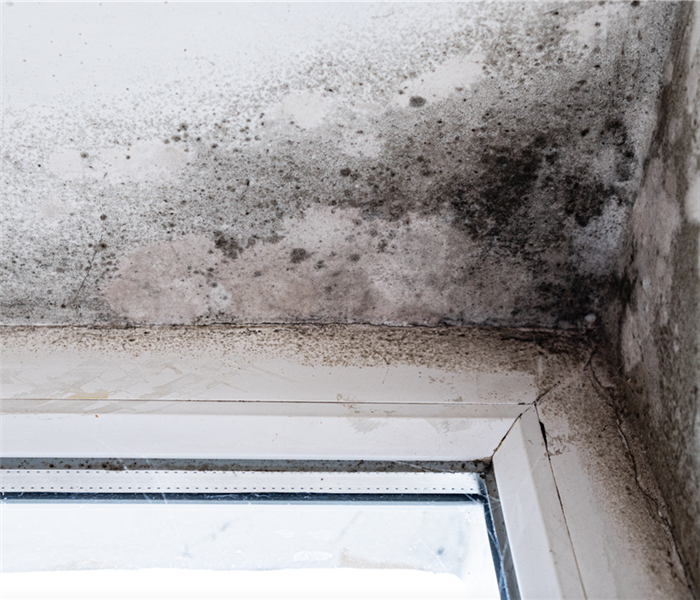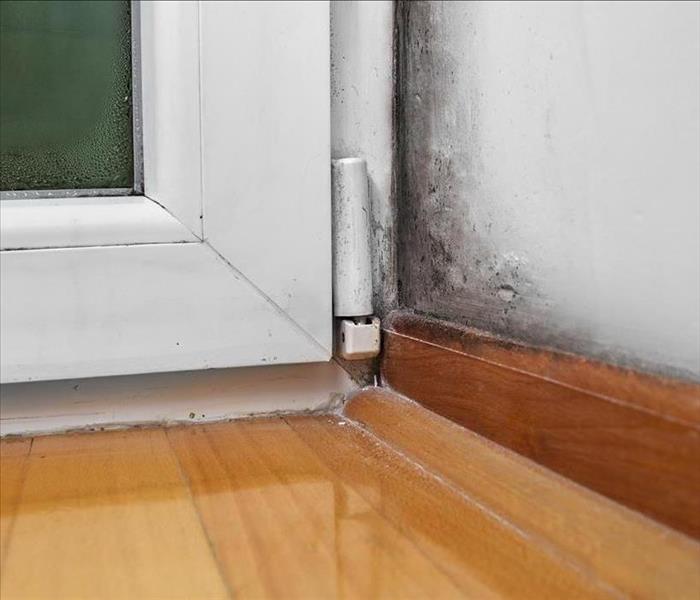Recent Mold Remediation Posts
Common Causes of Mold Growth in Homes: Understanding and Addressing the Issue
10/26/2023 (Permalink)
 By understanding mold and common cause, protect your home with the right precautions and preventative measures.
By understanding mold and common cause, protect your home with the right precautions and preventative measures.
Mold growth is a common problem faced by homeowners, and understanding its causes is crucial for effective prevention and management. In this blog, we will explore the common causes of mold growth in homes. By identifying these underlying factors, you can take proactive measures to address them, ensuring a mold-free living environment for you and your family.
Moisture Build-Up
Excess moisture is the primary catalyst for mold growth in homes. Improper ventilation, condensation, or leaks from plumbing, roofs, or foundations can create an environment conducive to mold development. Areas with high humidity, such as bathrooms or kitchens, are particularly susceptible. Regularly inspecting and addressing potential sources of moisture build-up is essential to prevent mold growth and potential damage to your home.
Plumbing Leaks
Leaky pipes or faucets provide a consistent source of moisture that can promote mold growth. Small, undetected leaks can occur behind walls or under sinks, creating a hidden breeding ground for mold. Regularly check for signs of water damage, such as water stains or wet spots, and promptly fix any plumbing leaks or issues to eliminate moisture and reduce the risk of mold infestation.
Poor Ventilation
Inadequate ventilation can contribute to moisture accumulation, creating an environment ideal for mold growth. Rooms with limited airflow, such as basements, attics, or bathrooms, are particularly prone to mold infestation. Ensure proper ventilation by using exhaust fans, opening windows, or installing air vents. By improving airflow and reducing humidity levels, you can effectively prevent mold growth in these areas.
Flooding and Water Intrusion
Flooding or water intrusion from heavy rainfall, burst pipes, or roof leaks can quickly create a moisture problem in homes. If not promptly addressed, these situations can lead to significant mold growth. It's crucial to address and repair any water damage immediately and thoroughly dry affected areas. This will prevent excessive moisture buildup and mitigate the risk of mold infestation in the aftermath of such events.
Dampness in Basements and Crawl Spaces
Basements and crawl spaces are prone to high humidity levels and moisture buildup due to their proximity to the ground. The lack of sunlight and proper ventilation further contribute to the likelihood of mold growth in these areas. Regularly inspecting and maintaining basements and crawl spaces, ensuring proper drainage, and using dehumidifiers can help prevent mold infestation and protect the integrity of your home's foundation.
Poor Maintenance and Neglect
Neglecting regular maintenance and upkeep of your home can contribute to mold growth. Ignoring minor water leaks, failing to clean and dry wet areas promptly, and neglecting routine inspections can create an environment prone to mold infestation. By practicing good maintenance habits, such as regularly checking for leaks, promptly addressing any water damage, and keeping your home clean and well-ventilated, you can prevent mold growth and maintain a healthy living space. Taking proactive steps to maintain your home's condition is key to avoiding mold-related issues.
By understanding the common causes of mold growth in your home and with research you can take proactive measures to prevent mold infestation. Regular maintenance, prompt repairs of leaks, adequate ventilation, and effective moisture control are vital in creating a mold-free living environment. By addressing these underlying causes, you can ensure the long-term protection and well-being of your home and loved ones.
5 Items You Should Throw Out After Mold Exposure in Your Home
5/16/2023 (Permalink)
 If you're unsure how to handle mold exposure in your home, contact our SERVPRO of Downtown Houston team for help.
If you're unsure how to handle mold exposure in your home, contact our SERVPRO of Downtown Houston team for help.
Mold is a type of fungus that can grow in damp and humid areas of your home. If you've recently had mold in your home, you may be wondering what items you should throw out. In this blog post, we'll share some tips on what to throw out after mold exposure.
Porous materials
Porous materials are those that can absorb water, such as wood, paper, and fabrics. If these materials have been exposed to mold, it can be difficult to remove the mold completely. In many cases, it's best to throw out these items, as mold can continue to grow even after cleaning. This includes items such as clothing, curtains, and upholstered furniture.
Cardboard and paper
Cardboard and paper are also porous materials that can absorb moisture and promote mold growth. If you have any cardboard boxes or paper items that have been exposed to mold, it's best to throw them out. This can include items such as books, magazines, and paper documents.
Food and drink
Mold can grow on food and drink, making it unsafe to consume. If you have any food or drink that has been exposed to mold, it's best to throw it out. This includes items such as bread, fruits, vegetables, and dairy products. It's important to be especially careful with items that are difficult to clean, such as sponges and kitchen utensils.
Non-porous materials
Non-porous materials are those that do not absorb water, such as metal, glass, and plastic. These materials are less likely to promote mold growth, but they can still become contaminated if exposed to mold. In many cases, non-porous items can be cleaned and salvaged after mold exposure. This includes items such as dishes, appliances, and hard furniture.
Electronics
Electronics are another item that can be affected by mold exposure. If you have any electronic items that have been exposed to mold, it's important to take precautions when handling them. Do not turn on the device until it has been thoroughly cleaned and inspected by a professional. In many cases, electronics can be salvaged after mold exposure, but it's important to take precautions to prevent further damage.
Act Fast: What to Do After Mold Exposure in Your Home
In conclusion, when it comes to mold exposure, it's important to take action quickly to prevent further contamination. Porous materials such as clothing and paper should be thrown out, while non-porous items can often be salvaged with proper cleaning. Food and drink should also be discarded if they have been exposed to mold. If you have any doubts about an item, it's best to err on the side of caution and throw it out. If you're unsure how to handle mold exposure in your home, contact a disaster restoration company, such as SERVPRO of Downtown Houston, for help.
6 Frequently Asked Questions about Mold in Homes
2/24/2023 (Permalink)
 There are thousands of different kinds of mold.
There are thousands of different kinds of mold.
Mold. It's all around us, in the air and on surfaces. There's even mold in your home. Here are some of the most common questions about mold.
What is mold and where does it come from?
Mold is a fungus that grows on damp or decaying matter. There are thousands of different kinds of mold.
Mold spores are microscopic, so you can't see them with the naked eye. They exist everywhere, from homes and offices to forests and grassy fields. Although mold spores are present everywhere, it doesn't become a problem until it is introduced to moisture or high humidity levels.
Mold spores can be tracked into your home through open windows and doors, your HVAC unit, and even by your shoes, clothes, or pets.
How do I know if I have mold?
If you have a damp and humid area of your home, it's possible that mold is growing on the wood or drywall. Mold can appear in any room of the house, and it's common to see it after a water leak or flooding. Bathrooms are prime locations for mold to grow as they are usually dark and humid.
If you see mold in your home, it's important to remove it right away. The longer it remains, the harder it will be to get rid of.
Will my insurance company cover the cost?
The answer to this question depends on your insurance company. Different insurers have different policies and may not cover mold removal. For instance, some insurance companies will only cover mold remediation if the infestation occurs due to a water leak or flooding; others require a preliminary inspection prior to making any decisions about coverage. You should contact your agent or broker before taking action so that they can help you understand their policy options.
Can I clean up mold myself?
If you are unsure about whether or not the mold in your home can be cleaned up, it's best to leave the job to a professional. If you do decide to try and clean up the mold yourself, make sure that you wear protective gear such as gloves and a mask when doing so.
If it is only a small patch of mold in one area of your home--for example, if there is some visible mold in the corner of your shower--you should be able to remove it using special cleaning products such as OxyClean. However, if there is extensive water damage that has led to large patches of mold infestations growing, then this type of remediation should always be left up to professionals.
How can I prevent mold?
To keep your home free of mold, you should make sure that humidity levels stay below 50%. It is also important to keep your home dry by cleaning up any water damage as quickly as possible.
Who can I call if I suspect there is mold in my home?
If you suspect there is mold in your home, it's important to call a professional. A professional can locate and remediate the mold properly and efficiently. Companies such as SERVPRO of Downtown Houston Central South is highly trained and experienced in residential and commercial mold remediation and cleanup. If you have any questions or are in need of water and mold cleanup services, don't hesitate and give our SERVPRO team a call today!
 By understanding mold and common cause, protect your home with the right precautions and preventative measures.
By understanding mold and common cause, protect your home with the right precautions and preventative measures.

 24/7 Emergency Service
24/7 Emergency Service

